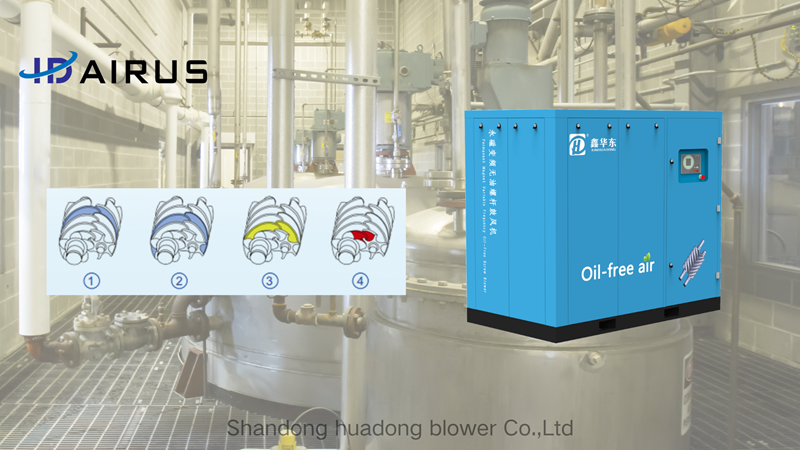In industrial production, blowers are the core equipment of many processes, and screw blowers are gradually becoming the favored products in the market with their excellent performance and energy saving advantages. Today, let's take a closer look at this energy-saving pioneer in the industrial field - screw blowers.
I. The advantages of screw blower
1. High efficiency and energy saving
Screw blower adopts screw structure design and has high gas compression efficiency. Its internal compression principle enables the screw blower to achieve lower energy consumption during operation. For example, the Clarix screw blower can save up to 35% energy at 0.8bar pressure, making it a new generation of energy-efficient blowers to replace traditional Roots blowers.
2. Stable and reliable operation
The structure of the screw blower is relatively simple, usually composed of a screw, a housing and a transmission system. This simple structure makes the screw blower more stable and less susceptible to vibration caused by external factors. At the same time, the speed of screw blowers is usually lower than that of centrifugal blowers, which means that they operate more smoothly and are less prone to surge.
3. Low noise
The design of the screw blower makes it less noisy during operation. This is due to the non-contact design of the rotor, as well as the inlet and exhaust noise reduction design and the use of low-noise line heads. For example, Clexi screw blower adopts inlet and exhaust muffler design with low noise type line head and vibration insulation of drive components to form a muffler system to minimize noise.
4. Easy maintenance
The screw blower has simple structure and convenient daily maintenance. Its main components, such as screw rotor, housing and transmission system, are designed for easy disassembly and maintenance. At the same time, the maintenance cycle of the screw blower is longer, which can effectively reduce the maintenance cost of the enterprise.
II. The working principle of the screw blower
The working principle of the screw blower mainly relies on the rotation of the screw to achieve the compression and transmission of gas. Its working process can be simply divided into the following steps:
1. Gas inhalation: When the screw blower is started, the gas from the air intake is sucked into the screw chamber, and the rotating action of the screw forms a sealing area, which captures the gas and pushes it to the next stage.
2. Compression process: After the gas enters the screw cavity, the rotation of the screw causes the gas to be compressed. The spiral shape and matching design of the screw allow the gas to be continuously compressed and transferred to the air outlet.
3. Gas discharge: The compressed gas is discharged through the outlet to complete the conveying process.
III. The application field of screw blower
Screw blowers are widely used in chemical, petroleum, pharmaceutical, environmental protection, food processing and other industries. Whether providing a stable air source for a process or for gas delivery and pressurization, screw blowers demonstrate their energy efficiency. For example, in sewage treatment, screw blowers can be used for aeration, air-water backflushing and other links to provide a stable air source to ensure the efficient operation of the sewage treatment process.
IV. The future development trend of screw blowers
With the continuous progress of industrial technology, the performance and efficiency of screw blowers are also constantly improving. In the future, screw blowers will pay more attention to energy saving and environmental protection to meet increasingly stringent industry standards and corporate needs. At the same time, the application of intelligent and automated technology will make the operation of the screw blower easier and the maintenance more convenient, and further enhance its competitiveness in the industrial field.
If you are interested in our products, please contact us at anytime.







 RETURN
RETURN










